AgriApp is an Android based mobile application. It provides complete information on Crop Production, Crop Protection, smart farming with agriculture and allied services. In addition to being an information portal, AgriApp is also an online market place for bringing in farmers, Agri input, retailers & fulfilment services on a common digital platform.
Don't wanna be here? Send us removal request.
Text
Trends to Watch in Digital Agriculture in 2021
Last year was one that we won’t forget. COVID-19 changed our world and impacted our daily lives, but as we worked through the challenges caused in 2020, digital technology stood out as a shining star across all segments of our lives. This was also the case in agriculture, and I expect that will continue into the new year.
What Did We See in 2020?
The last 12 months are a stimulating ride for all folks , but as we glance specifically at agriculture there have been some trends and news which will impact our industry into the future. We saw a renewed specialise in connecting by distance and using digital to speak with others. We saw more collaboration and platform agreements in the digital agriculture space, increasing product capabilities outside of individual organizational footprints or expertise. We also saw an increased interest in sustainability — specifically that specialize in carbon markets and provide chain initiatives. So, what will be the trends for 2021?
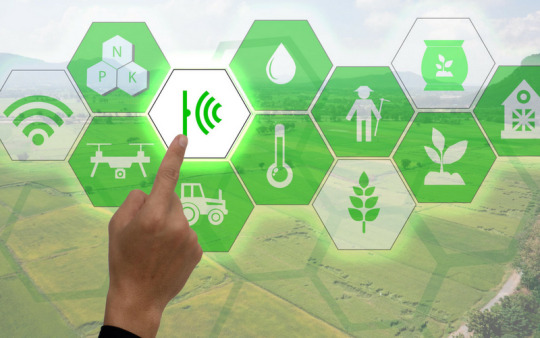
Collaboration
Collaboration within the industry has been an outsized staple of reflection in 2020 and can continue for 2021. From precision equipment to the farm management software connected across the operation, farmers need their tools to figure together, and therefore the demand for easy solutions is creating new opportunities. As platform agreements and integration between solution providers create options for farmers to attach previously separate technologies, we are starting to see more collaboration and fewer “all-in-one” sort of platform development and funding.
As digital agriculture continues moving toward majority adoption in 2021, farmers are more focused on uncovering additional value from existing tools instead of adopting and learning new products, or having multiple platforms to manage. We will also see increased integration of digital agriculture tools across other farm connections, like insurance and grain origination.
Adoption Growth
Adoption is moving more toward the bulk , and this is often in large part thanks to infrastructural improvements (some yet to be fully realized) which will make technology more available, connected, and affordable in 2021. Initiatives like 5G and expansion of rural broadband will make the jump into digital easier for several farms. We also must note that while COVID-19 has brought attention to digital, other tactics are increasing adoption, like cheaper solutions, and more centralized company strategies around digital becoming an integrated part of the broader industry, not just a footnote. With emphasis on affordability, better connectivity, and centralized strategies, 2021 is going to be a key year for adoption and growth of digital tools.
Sustainability
Sustainability continues to be one among the mainstay messages we see weekly from organizations, both in agriculture and out of doors of our industry. Initiatives to incentivize and reward farmers for sequestering carbon have created a large buzz, and 2021 will be where the rubber meets the road and these initiatives turn into transactions. Sustainability — whether through traceability or niche production — could also see a rise in 2021 with diversification on-farm becoming more important following the supply chain disruption experienced in 2020. Farmers are resilient, and can still find opportunities to maximise profitability with new business potentials.
0 notes
Text
In the Wake of COVID-19 How Digitization Is Moving Indian Agriculture Forward
The impact of the raging COVID-19 pandemic has been felt all across the world . It's impacted every business across industries and slowed the economic process tremendously. Its influence is often seen throughout the Indian industrial sectors due to the lockdown imposed across the nation to limit the spread of the virus.
The agricultural sector seems to be the bright side that had a 5.9% growth in January to March quarters in 2020, even within the COVID-19 crisis, while only 3.1% of growth was observed within the Indian economy.
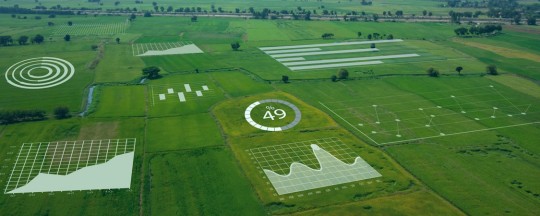
Technological agricultural systems are the necessity of the hour which can bolster the growing agricultural sector. There are many free android Agri apps that assist farmers with relevant information on the weather of the present day and next five days, market prices, dealers, agro advisories, and plant protection. It also has extreme weather alerts and market prices of the commodity within the nearest area and therefore the maximum price within the state, also as India. While Bhuvan, an Indian Geo-platform of ISRO, employs geospatial spatial technologies for gathering data useful for plantation, pest surveillance, and weather predictions.
The use of knowledge and knowledge obtained from such resources are often optimized by digitalizing the farm and therefore the farmer. With the coronavirus situation and therefore the social-distancing protocol affecting the labour and agricultural inputs availability, smart agricultural technologies like precision agriculture and UAVs are often used effectively to manage agricultural fields.
Many Indian agri-tech start-ups and government programs help in sowing and crop monitoring, capturing and analyzing various data points, including crop, soil, and weather data, all of which may assist in deciding and facilitate farmers’ access to crop insurance and institutional credit. Such agencies won't only help to sustain the agro-sector of India within the wake of this pandemic but also propel it towards
0 notes
Text
How IoT Solutions Are Working In Indian Agriculture Despite Many Challenges
With a growing global population, estimated to touch 9.6 billion by 2050, the agriculture sector must scale to fulfil the demands, despite adverse environmental conditions and global climate change. To accommodate a burgeoning population’s needs, the agriculture industry will need to use innovative technologies to achieve a much-needed edge. Agricultural applications of IoT (Internet of Things) will enable the industry to strengthen operational productivity, reduce expenses, lessen waste, and increase their yield quality.
IoT-based smart farming may be a system built to watch the agricultural land with the assistance of sensors (soil moisture, humidity, light, temperature, etc.) and automate the irrigation practices. The farmers can observe the field situation from anywhere. For instance, it will alert the farmer when the soil moisture level is low; the farmer can use sensors to begin irrigation. IoT-based smart farming is very efficient in contrast to old traditional methods.
Precision farming is the commonest application of IoT in farming. It makes the agricultural practices more accurate and well-planned by including processes like real-time crop and soil condition monitoring, plant health tracking, and weather prediction. The farmers can administer their fields supporting the insights obtained by this technique . Moreover, by using mobile devices, high-speed internet, and sturdy , low-cost satellites (for imagery and positioning), the IoT-integrated AI system can give up-to-date alerts and data to optimize crop growth processes and to scale back yield loss due to pests, detrimental soil moisture level, or weather damages. This farming method assures correct usage of resources and increases field productivity while maintaining the sustainability of the method .

The Method of irrigation depends on the soil moisture level rather than predetermined interval-based irrigation.
IoT-equipped irrigation systems not only conserve water but also make sure that crops are becoming just the proper amount of water for his or her optimum growth. Numerous organizations leverage this technology throughout the globe.
However, this technology’s application poses its own unique challenges in India, especially for farmers who have small land-holding and are located in rural areas lacking decent internet connectivity and proper infrastructure, without which advanced monitoring systems are useless. The high cost of IoT equipment and its complexity can also discourage farmers from humble backgrounds.
Therefore, strategic and systematic IoT application plans and supporting government schemes are required to embrace such smart farming technologies and endorse its implementation. If successful, it'll undoubtedly boost the agricultural sector’s economy. Hence, advancing agriculture by digital transformation should be of prime goal in India.
0 notes
Text
SMART AGRICULTURE TECHNOLOGIES THAT MADE FARMING SMARTER
Agriculture is the most vital sector within the world that gives food to a person's being. The agriculture sector is the second greatest source of employment after the service sector contributing 28% in global employment. Around 1.3 billion people are employed by the agriculture sector. Nowadays modern agriculture technology plays an enormous role in farming.
The farming business is totally hooked into nature. In many parts of the planet , this sector is in peril thanks to tremendous changes in climate thanks to heating and lots of others.
It is a requirement today to teach a farmer to use modern agriculture Technology which will make farming easier and affordable too.
A warning way before the crisis actually rises can help us to decrease the probabilities of losses and empower the agriculture sector round the globe.
Here are some smart agriculture technologies that make farming smarter
Soil and crop sensors
Today, more farm equipment is out there with smart sensors which will read everything from crop health to essential nitrogen levels within the water. The sensors then enable on-the-go applications of input supported real-time field conditions.
Sensor technology is additionally available to live the electrical conductivity of soil, ground floor, organic matter content and even soil characteristics like pH. for instance , Varis Technologies, Bionics, and Dulem all produce differing types of soil sensors

Crops Connected with Wi-Fi
Modern farms usually have electronic sensors distributed within the field which will monitor for various conditions; In some cases, gadgets send data to an on-the-farm server or cloud (network servers are widely used for computing and data processing).
These figures are analyzed automatically and send instructions to the farm’s automatic irrigation system, which in some cases may even add the right dose of fertilizer as required before the right amount of water is dispersed through drip tape, with hollow rows of holes running alongside the crop.
It maximizes efficiency, periodically distributes the proper amount of water, can prevent waste and reduces the quantity of fertilizer water. Farmers can access this data via tablet or smartphone, giving them real-time information which will require a slow, manual-intensive soil-testing process within the past.
Robot Farmer
The development of self-driving cars is additionally accelerating on the farm. Self-driving tractors and robots are getting more common as how to automatically control the value of payroll from time to time done by humans. There are robots to settle on lettuce and strawberries, grass, oranges, and cut grapes.
Some are attached to a human-powered tractor while some are highly customizable with sensors and attachments that perform very specific tasks, like checking out where the cows are pollinated and treating to stimulate the affected grass to grow again. These robots are often guided by precise GPS tracking in order that they can easily navigate the narrow space between rows of crops.
Wavelength Management
Urban and vertical home farming is becoming more popular, which provides growers of certain crops year-round thanks to growth, no matter the weather outside. But one among the challenges is the way to create the perfect wavelength of sunlight adapted to the expansion of compressed indoor spaces.
While indoor lighting has traditionally been employed by energy-intensive and expensive full-spectrum fluorescent lighting to market plant growth, advances in light-emitting diodes (LEDs) in recent years have provided a less expensive and better alternative. Modern agriculture technology makes farming easier and smarter.
0 notes
Text
How Agritech Can Be A Solution To Farmers?
Agriculture is the pillar of the Indian economy. It contributes nearly 66% to the general employment opportunities within the country. However, traditional methods of agriculture aren't sustainable and can't help the world survive and thrive. Because the human population grows and suitable land decreases, the agriculture sector is going to be under tons of stress to feed this increasing population.
Agri-tech: Smart farming that leverages technology
Technology is often a strong enabler not only it involves overcoming the hurdles within the supply chain, but also to enhance the yield and revenues. Enter agri-tech, which leverages the facility of technology to enhance farming-related activities. Agri-tech holds immense promise when it involves helping improve the yield and profitability for farmers with greater efficiency.
Niche agri-tech start-ups are leveraging the newest technologies including AI , machine learning, big data analytics, blockchain, drones, GIS, and Internet of Things (IoT) to unravel pressing problems that are plaguing the agriculture industry in India. From supply chains to more basic issues like the standard of seeds or soil, scarcity of water, lack of storage facilities, and poor access to plug , the agri-tech start-ups are helping the Indian agriculture sector subdue these hurdles. Apps using IoT and sensors help determine wind speeds also as moisture content of the soil. Further, they assist monitor the health of the crops.

How Can AgriTech Address The Farming Challenges
The Small Size Of Farmlands
Unlike the west, size remains an important challenge for this sector. Still, the world houses a huge population of farmers who own highly fragmented agricultural lands. They produce in small numbers and eventually earn less income. With the assistance of agritech, these farmers can take their produce to a web marketplace and sell it across India. Through these online platforms, they will reach international buyers and sell their produce at attractive prices at a worldwide level
Crop Traceability
From a buyer’s point of view, crop traceability may be a challenge that they majorly face in an offline mandi. As an example , today, once you visit an area mandi for purchasing vegetables, you've got no idea about the particular producer. just in case you face any challenge with the standard of the produce, you've got no choice to identify the farmer. Agritech can bridge this gap by creating transparency between the buyer and therefore the original farmer. It means any future requirement supported factors like quality, produce or consumer needs, are often efficiently ascertained through online platforms.
Crop Wastage
Farmers usually haven't any access to scientific data that they will leverage for better deciding related to crops and fields. However, agri-tech companies have crop advisory teams that provide in-depth insights on soil health supported past analysis
These experts also are adept at predicting weather using tech advances like AI (AI) and drones. It helps farmers minimize crop wastage thanks to natural factors like heavy rainfall, drought, etc. Moreover, with such technological assistance, farmers can have a far better idea of when to plant and harvest a specific crop for the highest-quality yield.
Low Crop Yield
Agritech also can address and enhance the crop yielding capacities of farmers by studying the history of farmers, crops and their lands. By using this data, experts can develop tailor-made seeds, agri-nutrients and other pre & post-harvest inputs for farmers and help them deliver higher yields from their farms.
0 notes
Text
How Smart Farming Technology Can Be Applied With the Help of Smart Farming Applications
Smart Farming is focussed on the utilization of knowledge acquired through various sources (historical, geographical and instrumental) within the management of farm activities. Technologically advanced doesn’t essentially mean that it's a sensible system. Smart systems differentiate themselves through their ability to record the info and add up out of it. Smart farming employs hardware (IoT) and software (SaaS) to capture the data and provides actionable insights to manage all the operations on the farm, both pre and post harvest. The data is organized, accessible all the time and filled with data on every aspect of finance and field operations which will be monitored from anywhere within the world

HOW AUTOMATION AND ROBOTICS HELP?
IoT in agriculture involves sensors, drones and robots connected through the web which function automatically and semi automatically performing operations and gathering data aimed toward increasing efficiency and predictability. With increasing demands and lack of labor across the world , agriculture automation and robots or commonly referred to as Agribots are beginning to gain attention among farmers. Recent advancements in sensors and AI technology that lets machines to teach on their surroundings has made agrobots more notable. The world is in the starting phase of a robotics revolution with most of the products still in trial phases and R&D mode Semi automatic robots with arms can find weeds and spray pesticides within the affected plants, saving up the plants also as over all pesticide costs. These robots also can be utilized in harvesting and lifting. Heavy farming vehicles can also be navigated from homes through phone screens to perform tasks and GPS can track their positions at whenever Drones with sensors and cameras are used for imaging, mapping and surveying the farms. They can be remotely controlled or they can fly automatically through software-controlled flight plans in their embedded systems, working in coordination with sensors and GPS. From the drone data, insights are often gathered regarding crop health, irrigation, spraying, planting, soil and field, plant counting and yield prediction and far more IoT based remote sensing utilizes sensors placed along the farms like weather stations for gathering data which is transmitted to analytical tools for analysis. They analyse the crops for changes in light, humidity, temperature, shape and size. The data gathered by sensors in terms of humidity, temperature, moisture precipitation and dew detection helps in identifying the weather pattern in farms so that cultivation is completed for suitable crops. The analysis of quality of soil helps in identifying the nutrient value and drier areas of farms, soil drainage capacity or acidity, which allows to manage the amount of water needed for irrigation and therefore it opt most beneficial sort of cultivation. Computer imaging requires the use of sensor cameras installed at different corners of the farm or drones equipped with cameras to provide images which undergo digital image processing. The images are used for control , disease identification, sorting and grading yield and irrigation monitoring through Image processing combined with machine learning which uses images from database to compare with images of crops to work out the dimensions , shape, colour and growth therefore controlling the standard
ROLE OF SAAS-BASED CLOUD SOFTWARE IN SMART FARMING
Cloud based software is employed for the management of monetary and field activities of farms. Prior to computers, farmers used maintained data manually by keeping lengthy records on papers. This method was prone to human calculation errors. After the PC boom within the 1980s, it had been shortly before finance software like Money Counts came to plug . They used spreadsheets to maintain the financial data. The biggest challenge that farmers faced was the lack to manage field data. These software were wont to maintain finance data only. Around the mid 2000s, satellite image use with tools like Raven Receiver for field zone tracking became widely used. Farmers had to use and coordinate different tools to manage complete farm operation. With constant improvements through the years Agritech SaaS has become one tool for management of these activities and more at one place through one tool. Cloud software stores tonnes of knowledge concerning weather cycles, crop patterns, soil quality, harvesting and satellite imagery to supply insights with sharp accuracy and speed. All the info associated with the farm is stored in cloud and hence readily accessible. So if in future, crops are infected with an equivalent symptoms as 10 years ago, the info are often wont to find the remedy used at that point Data Processing/Analysis Database management in cloud software traffic jam all the loose ends of each sort of data available with reference to farms to enable higher levels of decision-making. Meteorological data, market data, farm data, GIS and water availability - all the info from past and present is analysed thoroughly before giving optimum value of seeding, water and pesticide requirements for a farm. The systems even have an alert system whenever inconsistencies in crop growth are detected. Hence these systems function efficiently just in case of pest attack informing farmers with actionable data.Data Storage and Dissemination Data storage is the backbone of predictive analysis. Earlier the info storage was hardware based, hence hardware needed to be carefully maintained and stored. Loss of hardware meant the info was gone forever. Nowadays the agritech systems are cloud based, which suggests that one needn't invest in purchase and maintenance of hardware. All the info is out there all the time and may be accessed through phone, PCs and tablets. Data storage is significant also in accurate analysis. The more data is out there concerning farms, the more accurate detection of weather phenomena, pests, crop yield and profits are going to be
0 notes
Text
What are the crop protection methods that can boost farming productivity?
Farmers already began to use various tricks to extend the crops. By 2050, we'll need 70% more food, therefore the introduction of the latest technologies is extremely relevant. And technology can substantially improve agricultural efficiency.
Crop protection may be a complex of instruments, products, and methods to defend crops against pests, viruses, plant diseases, and other harmful factors. they will have devastating results considerably reducing or maybe destroying future crops. Farmers and scientists round the world are constantly performing on control measures to eliminate unwanted impact. and therefore the experts have come to a standard conclusion that protection is way more efficient than cure. Luckily, the newest developments in modern agriculture provide various solutions.
The correct approach to plant protection is of serious importance because it enables farmers to spice up productivity and reduce the losses.
If farmers stop implementing crop protection methods, they're going to immediately lose about 40 percent of the crop thanks to pests and plant diseases.
Crop monitoring may be a powerful tool for achieving sustainable crop production. It helps promote agro ecological knowledge and practice to develop a resilient farming system. This approach averts the negative factors, thus reducing the potential costs needed just in case of problem manifestation. So, what are the best methods of crop threat prevention?
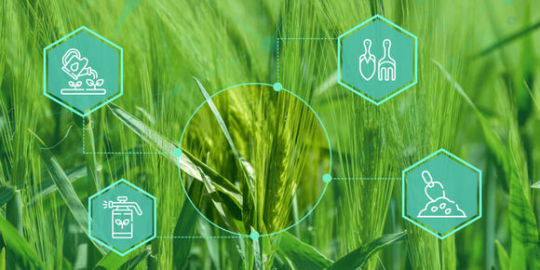
What Assessment Methods Does The Monitoring System Use?
The fields got to be closely monitored to spot potential problems with vegetation. This task is now entrusted to AI systems that collect and analyse large amounts of knowledge and supply information about the present state of the land. Fertile soil will bring healthy plants that are less vulnerable to the influence of pests and diseases. It works sort of a human system
Main parameters that our system will monitor:
Soil fertility
Moisture level
Weather forecasts
Analysis of pest thefts
Crop Rotation may be a Powerful Tool In Crop Protect Approach
Crop rotation is of great importance within the fight against pests and diseases of crops. This factor decreases the phytosanitary potential by 2- 6 times compared to its level in permanent crops. During this case, specific weeds, diseases, pests disappear. Corn is characterized by stable self-compatibility and may be grown for 4-5 years in one and therefore the same area. But peas, sugar beets, wheat, barley, oats, rye, vetch negatively react even to at least one repeated sowing and, on the contrary, will give an increased crop once they are correctly placed within the crop rotation.
Crop rotation may be a priority condition for improving the soil, crops and therefore the environment. Using our platform, you'll easily control crop rotation by updating data on what crops were grown in certain areas and therefore the way they alternated.
Irrigation System Optimization
The soil moisture level is the key to maintaining optimal plant health and maximum crops. After zoning the fields using vegetation indices within the Crop Monitoring system, you'll identify zones that have constant low productivity.
The reasons are the relief features and lack of water. Or, on the contrary, it is often the flooding issue, also as their improper fertilizing. of these factors will weaken the plants and make them more vulnerable to diseases. Flooding of certain areas boosts weeds growth. By identifying and eliminating these factors, you'll take an enormous step towards preventing possible threats.
Another aspect of irrigation optimization is water control. About 70% of unpolluted water is employed for agricultural needs worldwide. And 60% of it's wasted. Modern technology systems solve this problem allowing remote and efficient distribution.
0 notes
Text
Modern tech and Agriculture
Farmers today can use the advantages of the industrial revolution to extend their yields from farming and livestock rearing
Modern agriculture is driven by continuous improvements in digital tools and data also as collaborations among farmers and researchers across the general public and personal sectors.
During the revolution within the 1960s, India could achieve self-sufficiency in grain production by using modern methods of agriculture to prefer quality of seeds, proper irrigation, chemical fertilisers and pesticides.
As time passed, more technological advances appeared in agriculture. The tractor was introduced, followed by new tillage and harvesting equipment, irrigation and air seeding technology, all resulting in higher yields and improved quality of the food and fibre that was grown.
It is possible for farmers to utilise scientific data and technology to enhance crop yields and keep themselves up-to-date with leading edge methods of farming.
Modern agriculture is driven by continuous improvements in digital tools and data also as collaborations among farmers and researchers across the general public and personal sectors.
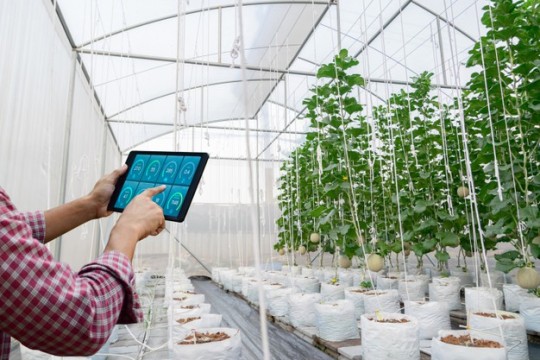
Here are some samples of how modern technology are often wont to improve agriculture:
1. Monitoring and controlling crop irrigation systems via smartphone
Mobile technology is playing a crucial role in monitoring and controlling crop irrigation systems.
With this contemporary technology, a farmer can control his irrigation systems from a phone or computer rather than driving to every field.
Moisture sensors within the ground are ready to communicate information about the extent of moisture present at certain depths within the soil.
2. Ultrasounds for livestock
Ultrasound isn't just for checking on baby animals within the womb. It can also be wont to discover what quality of meat could be found in an animal before it goes to the market.
The testing of DNA helps producers to spot animals with good pedigrees and other desirable qualities. This information also can be wont to help the farmer to enhance the standard of his herds.
3. Usage of mobile technology and cameras
Some farmers and ranchers use apps like ‘Foursquare’ to stay tabs on employees. They also put up cameras around the farm.
Livestock managers are wiring up their barn feedlots and pastures with cameras that send images back to the central location like an office or computer . They can keep a better eye on the animals once they are away or home for the night.
4. Crop Sensors
Crop sensors help apply fertilisers during a very effective manner, maximising uptake. They sense how your crop is feeling and reduce the potential leaching and runoff into groundwater.
Instead of making a prescription fertiliser map for a field before you leave to use it, crop sensors tell application equipment what proportion to use in real time.
Optical sensors are ready to see what proportion fertiliser a plant may have , supported the quantity of sunshine reflected back to the sensor.
Vision about modern agriculture
Nearly everyone performing on the longer term of recent agriculture is concentrated on efficiency. A wide range of technologies will enable the transition of recent agriculture within the field.
Some technologies will got to be developed specifically for agriculture, while other technologies already developed for other areas might be adapted to the fashionable agricultural domain like autonomous vehicles, artificial intelligence and machine vision.
If modern agriculture is applied widely within the near future, many farmers are going to be ready to enjoy the acquisition of real-time farm information.
Farmers needn't spend a big amount of your time on acquiring farm data and can have access to disaster warnings and weather information when a disaster event occurs.
It is difficult to predict the longer term of technology in agriculture but there are many promising trends and pilot projects.
If modern agriculture is applied widely within the near future, many farmers are going to be ready to enjoy the acquisition of real-time farm information.
Farmers needn't spend a big amount of your time on acquiring farm data and can have access to disaster warnings and weather information when a disaster event occurs.
It is difficult to predict the longer term of technology in agriculture but there are many promising trends and pilot projects.
0 notes
Text
What Are The Applications Of IOT In Agriculture - The Need And Implementation
Robotics
Since the economic revolution within the 1800s, automation is merely getting advanced to efficiently handle more sophisticated tasks and increase production. With increasing demands and lack of labor across the planet , agriculture robots or commonly mentioned as Agribots are starting to gain attention among farmers. Recent advancements in sensors and AI technology that lets machines to coach on their surroundings has made agrobots more notable. We are still in the early stages of an ag robotics revolution with most of the products still in early trial phases and R&D mode.
Weeding Robots
Smart agribots use digital image processing to see through the pictures of weeds in their database to detect similarity with crops and comb out or spray them directly by their robotic arms. With increasing number of plants becoming immune to pesticides they're a boon to the environment and also to farmers who want to spread the pesticides throughout the farm
Machine Navigation
Tractors and heavy ploughing equipment are often run automatically from the comfort of home through GPS. These integrated automatic machines are highly accurate and self adjust once they detect differences in terrains, simplifying the labor intensive tasks. Their movements also as work progress are often easily checked on smartphones.
Harvesting Robotics
Utilizing agribots to select crops is solving the matter of labor shortages. Working the fragile process of picking fruits and vegetables these innovative machines can operate 24/7. A combination of image processing and robotic arms is employed by these machines to work out the fruits to select hence controlling the standard . Due to high operational costs crops that have an early specialize in agrobot harvesting are orchard fruits like apples. Greenhouse harvesting also finds applications with these bots for top value crops like tomatoes and strawberries. These bots can add greenhouses to aptly determine the stage of crop and harvest them at the proper time
Material Handling
Robots can perform dreaded manual labour tasks working alongside the labors. They can lift heavy materials and perform tasks like plant spacing with high accuracy therefore optimizing the space and plant quality, and reducing production costs.
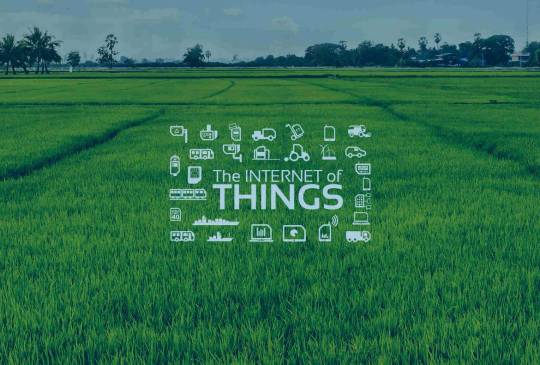
Drones
Agriculture is one among the main industries to include drones. Drones equipped with sensors and cameras are used for imaging, mapping and surveying the farms. There are ground based drones and aerial drones. Ground drones are bots that survey the fields on wheels. Aerial drones- formally referred to as unmanned aerial vehicles (UAVs) or unmanned aircraft systems (UASes) are flying robots. Drones can be remotely controlled or they can fly automatically through software-controlled flight plans in their embedded systems, working in coordination with sensors and GPS. From the drone data, insights are often drawn regarding crop health, irrigation, spraying, planting, soil and field, plant counting and yield prediction and far more. Drones can either be scheduled for farm surveys ( drone as a service ) or are often bought and stored near farms where they will be recharged and maintained. After the surveys the drones got to be taken to nearby labs to analyse the info that has been collected.
Remote Sensing
IoT based remote sensing utilizes sensors placed along the farms like weather stations for gathering data which is transmitted to analytical tools for analysis. Sensors are devices sensitive to anomalies. Farmers can monitor the crops from an analytical dashboard and take action based on insights.
Farmers can perform:
Crop Monitoring
Weather Condition
Soil Quality
Computer Imaging
Computer imaging involves the utilization of sensor cameras installed at different corners of the farm or drones equipped with cameras to supply images which undergo digital image processing. Digital image processing is the basic concept of processing an input image using computer algorithms. Image processing views the pictures in several spectral intensities like infrared, compares the pictures obtained over a period of your time and detects anomalies thus analysing limiting factors and helps better management of farms.
0 notes
Text
Smart Farming the future of Agriculture sector
"Smart farming" is an morden concept that refers to managing farms using technologies like IoT, robotics, drones and AI to increase the amount and quality of products while optimizing the human labor required by production
The Internet of Things (IoT) has provided not only how to raise, measure and control growth factors, like irrigation and fertilizer, on a farm, it'll change how we view agriculture in its entirely. In this article, we will explain what exactly a sensible farm is and IoT will impact the longer term of farming.
What is a Smart Farm?
Smart Farming is an morden concept that refers to managing farms using modern Information and Communication Technologies to extend the number and quality of products while optimizing the human labor required.
Among the technologies available for present-day farmers are:
Sensors: soil, water, light, humidity, temperature management
Software: specialized software solutions that focus on specific farm types or use case agnostic IoT platforms
Connectivity: cellular, LoRa, etc.
Location: GPS, Satellite, etc.
Robotics: Autonomous tractors, processing facilities, etc.
Data analytics: standalone analytics solutions, data pipelines for downstream solutions, etc.
Armed with such tools, farmers can monitor field conditions without even getting to the sector and make strategic decisions for the entire farm or for one plant.
The drive of smart farming is IoT —connecting smart machines and sensors integrated on farms to form farming processes data-driven and data-enabled.
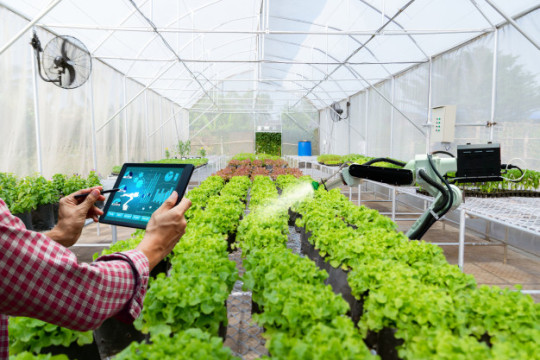
IoT Solutions to Agricultural Problems
Many believe that IoT can add value to all or any areas of farming, from growing crops to forestry. Here we have mention two major areas of agriculture that IoT can revolutionize:
1. Precision farming
2. Farming automation/robotization
Precision Farming
Precision farming is an umbrella concept for IoT-based solutions that make farming more controlled and accurate. In other words, plants get precisely the treatment they need , determined by machines with superhuman accuracy. The biggest difference from the classical approach is that precision farming allows decisions to be made per square metre or maybe per plant instead of for a field.
By accurately measuring variations within a field, farmers can boost the effectiveness of pesticides and fertilizers, or use them selectively.
Automation in Smart Greenhouses
Traditional greenhouses control the environmental parameters through manual intervention or a proportional control mechanism, which frequently leads to production loss, energy loss, and increased labor cost.
IoT-driven smart greenhouses can intelligently monitor also as control the climate, eliminating the necessity for manual intervention. Various sensors are deployed to live the environmental parameters consistent with the precise requirements of the crop. That data is stored during a cloud-based platform for further processing and control with minimal manual intervention.
Agricultural Drones
Agriculture is one of the main verticals to include both ground-based and aerial drones for crop health assessment, irrigation, crop monitoring, crop spraying, planting, soil and field analysis and other spheres.
Since drones gather multispectral, thermal and visual imagery while flying, the info they gather provide farmers with insights into an entire array of metrics: plant health indices, plant counting and yield forecast, plant height measurement, canopy cover mapping, field water pond mapping, scouting reports, stockpile measuring, chlorophyll measurement, nitrogen content in wheat, specific cultures drainage mapping, weed pressure mapping, and so on.
IoT-based smart farming doesn’t only target large-scale farming operations; it can add value to emerging trends in agriculture like organic farming, family farming, including breeding particular cattle and/or growing specific cultures, protection of particular or high-quality varieties etc., and enhance highly transparent farming to consumers, society and market consciousness.
Smart farming features a real potential to deliver a more productive and sustainable sort of agricultural production, supporting a more precise and resource-efficient approach.
1 note
·
View note
Text
Smart farming the need of the hour
Farming involves the mixing of advanced technologies into existing farm architecture. IoT-based solutions and services are in more demand now using agriculture apps for Smart farming in order to increase the production quality of agricultural products and the efficiency at which products are produced. Smart farming is considered a management concept or a way to address the challenges that the food industry is experiencing, such as climate change.
Smart farming is going to be ready to increase the effectiveness of pesticide and fertilizer use in a selective manner, it can provide farmers the power to watch individual needs of all animals, it can help prevent disease and increased herd health, and it can even allow farmers to watch crop health and speed up harvest. Currently, there are three agricultural technologies that are expected to become the pillars of the industry, autonomous robots, drones or UAVs, and therefore the IoT sensors based farming solutions

Three Pillar Technologies Driving Smart Farming
Autonomous and Robotic
Reducing human efforts with automation is a growing trend and with how labor-intensive farming is, it makes sense to automate recursive and standardized tasks. As smart equipment becomes possible, the agriculture sector goes to ascertain things like driverless tractors, precision seeder machines, and automatic smart water irrigation systems that use IoT sensors and data information to get the job done. On the other hand, several robotic prototypes are being tested to navigate through crop fields and perform tasks such as weeding, pest control, and plant maintenance through the use of machine learning and artificial intelligence. Engineers are currently working on robotic components that will be able to complete advanced tasks such as picking fruit off trees and identifying food ripeness.
Drones for Imaging & Planting
With the innovations in imaging technologies, farmers are no longer limited to taking bird’s eye pictures of their farm in visible light nor are they required to only take still photographs. Farmers are now ready to take photographs in infrared, hyperspectral imaging, and ultraviolet imaging, to not mention video. In utilizing all of those imaging types, farmers are ready to collect more detailed data than ever before, helping them make informed decisions on assessing soil quality, planning out planting locations, and monitoring crop health. When land surveying is completed regularly, farmers are going to be ready to optimize the smart farming process.
Beyond this, farmers will soon be able to use drones to seed and plant their fields. When these drones are combined with IoT software and autonomous operation, a fleet can completely replace the need for manual efforts. Plus, with precise planting, the drones make sure that each crop is planted with ideal conditions. This can increase crop growth and supply a better crop yield. This can be taken a step further, as drones are going to be used for crop spraying applications, offering farmers the power to eliminate a labor-intensive task. How? Through the utilization of GPS, laser measurements, and ultrasonic positioning, enabling each drone to adapt their position, adjust for geography and topography, and take into consideration wind speed. If used precisely, drones can spray crops with greater accuracy and abolish surplus waste. Drones are often used for remote monitoring and field analysis. Rather than employing a small team of workers to visually check on each field, a little fleet of drones is often used. This will exterminate the time needed to get sensitive data back about each field and exterminate extra labor on healthy plants that do not need tending.
Connected Farms Using IoT based Sensors
Smart farms will have IoT Sensors embedded throughout every single stage of the farming process and as a result, on every single piece of kit used. These sensors will be able to take in data such as light levels, soil conditions, air quality, weather, & irrigation needs. This data can then be transported back to the farmer or directly integrated into the robots that autonomously respond and look out for the work needed. This can be anything from performing weeding maintenance, watering and pruning plants, harvesting crops, and collecting crops
This can go a step further with drones, which can have a bird’s eye view of plant health, soil conditions, and weather. They can generate maps that will help guide the robots getting used and help the farmers plan out what steps to require within the farming process. In this sort of smart network, not only will there be higher crop production, but there'll increase the standard of the food and the way it quickly becomes available. The information that gets generated through the smart farming process is going to be the backbone of operations because it will allow farmers to ascertain all aspects of their farm at a glance, including which fields need watering, what harvesters are doing, and which plants need attention.
0 notes
Text
Why are agriculture apps vital to modern agriculture?
Agriculture is as ancient as the history of mankind, agriculture is an area that has marked unrushed transformation through the centuries. Till date, operations on and off the field continue to be highly traditional and require much human efforts, especially in developing countries. In the wake of technology interference, many farms and agribusinesses are steadily adopting technology into farm practices as it has a considerable impact on productivity and efficiency to say the least. Agriculture technology, or AgriTech/AgTech as it is more popularly referred to, has proven to ease the effort required in farming and related operations, all the way from farm to fork
As one of technology’s most important descendants, the Smartphone has established its viability and versatility in a mass of sectors, including unconventional and traditional ones such as agriculture. By placing huge expanses of farmlands right on the hands, agricultural apps are transforming the way fields have been tilled and harvested. moreover, digitalization of agriculture has empowered not just to farmer, but also stakeholders at different levels of the agri-ecosystem to get the control on the process involved in the food production and supply chain. Agribusinesses and other agricultural entities, both governmental and non-governmental, are turning to various software and hardware digital farming tools such as farm management solutions, Internet of things (IoT), mobile applications, and other forms of precision agriculture
Modern technology in agriculture is more than just the usage of mobile applications or a hardware system to automate redundant processes and reduce dependency on humans Although options are quite limited at present, users of smart farming solutions opt for a UI/UX that is both flexible and extremely convenient to use
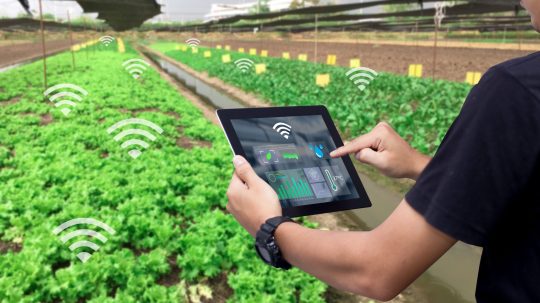
How Does AgriApp Encourage Smart Farming? AgriApp is an Android based mobile application. It provides complete information on Crop Production, Crop Protection, smart farming with agriculture and allied services. In addition to being an information portal, AgriApp is also an online marketplace for bringing in farmers, Agri input, retailers & fulfilment services on a common digital platform.
AgriApp is an all-encompassing ag-tech features such as ICT, IoT, Big-Data, e-Commerce and m-Commerce with an intent to bring the technology to the field of agriculture and food sector to provide smart farming solutions. It works on precision and predictive agriculture while building a strong Agri-Ecosystem for the benefit of farmers and making healthy soil and happy farmers with better returns on the investment for farmers.
AgriApp works to fill the gap between farmers and accurate strategic Agricultural information, with the involvement of Agriculture Experts. Thus, enabling farmers to reach high-efficiency technology-enabled agriculture production and marketing of the Agriculture produce, ensuring a win-win situation to Farmers and Agriculture Economy
AgriApp is an end to end smart farming solution with various features like:
1. m-Commerce- Buy Crop Solutions:
Here AgriApp encourages farmers not to buy products, but to buy solutions for their farming needs! AgriApp follows this and provides inputs for Integrated Nutrient Management (INM) and Integrated Pest Management (IPM) approach. With this approach users can consult crop advisors prior to buying. They will help users to buy solutions for best crop production.
2. POP’s -Complete information of the Crop right from Sowing till Harvesting
Explore the Science and Art of Agriculture with Package of Practices (PoP’s) for each crop at convenient time. users can refer to it when they are in the field to understand all the factors of production leading to profitable agriculture. The expert guidebook is with users all the time, even in local language
3. Crop Calendar-Timely reminders for Smart farming & scientific Agro advisory
Agriculture experts bring users the calendar of events for planned crops with respect to the entire set of operations on a real time basis. Agro /crop advisory is delivered to the user's mobile which will help users to get into operations. This is one-of-its-kind service offered by AgriApp to enable farmers to address critical crop events at the right stage to enhance the productivity and achieve the full-potential of the crop.
4. Chat with Expert: Get real-time Agro Advisory through Agri Experts
Any query with respect to crop Advisory or protection? Our expert Crop/Agri Advisors are ready to answer and support. Users can connect with crop experts through Chat, Videos or Images and they will get back with the remedy in terms of Soil Health, Nutrition deficiency or Disease Pest Management. AgriApp is complete Agro Advisory and smart forming Guide
5. News and Videos: Get on time information about Agriculture around the world.
Users can use the features of news and videos focused on agriculture to stay connected to the recent trends and innovative happenings from around the world for sustainable agriculture.
0 notes
Text
How Mobile Apps Can Help Farmers
Mobile agriculture applications reshaped the world. Mobility has quickly become the world’s most used technologies of transporting data, voice and also various sorts of services in the world today. The mobile apps are used to deliver information and service to users. Even mobile applications are used to connect a wider range of audience in a more cost-effective and personalised manner. Either it may be healthcare, banking, retail or anything the mobility has transformed every sector. Now agriculture has become one among this category to use mobile applications so constructively
For most individuals , it could be a surprise that mobile technologies have reached the most traditional spheres – Farming. Forget about online shopping, games we talk about real farming, real crops and harvest all these are necessary to our lives. The work in this area is still difficult. As mobile technologies tend to simplify many business activities, they have found their implementation even in agriculture. Though it is an old industry nowadays, it is now becoming tech-oriented. The framers are now using new advanced and productive technologies
Smart agriculture is applied to enhance agricultural productivity, approach agricultural-based problems such as food demand and build farms more connected and intelligent. Present-day technologies in agriculture are to cultivate more productivity by putting fewer efforts and resources; farmers can gain a huge amount of production. Mobile applications with advanced technologies are there for the agriculture industry to uplift it with all the needs of the farmers. The agriculture app development companies are now coming with agriculture apps with new technologies and features

Here are the significant features that can help farmers or agribusiness owner:
Weather forecasting: Using the app, the farmer will be informed about the climate, whether it is a rainy day or a happy day. It would aid them in taking informed majors to insure their crops
Diseases and their treatment: The farmers could get assistance from the experts about the diseases of their crops. The experts would recommend them likewise with the required treatments. Using the mobile app, they need not to go anywhere for suggestions. If needed, they can do a video call or can have live chat and can explain the situation to the experts. So the experts can recommend the best treatment for the infection
Use GPS tracking: Apps with GPS tracking would signify the whole field in a guide which is a useful thing to maintain. With the help of this feature farmer can analyse the activities in the farm and use that data for other use too
Listing Inputs for agriculture: If the agriculture app is marketplace applications with a list of pesticides, seeds, fertilizers etc then it can help farmers to buy inputs directly and hassle free
Keeping up a schedule by agricultural app: Using the app, farmer can maintain the timetable of the crops which will be beneficial for best agriculture practices
Calendar: A schedule allows farmers to plan every one of their activities. Also it will give real-time alerts about right timings of cultivation and harvest
Pop-up Notification: Pop-up notifications will give you the news updates regarding cultivating and about the new methods and recent changes in agriculture sector to the farmers automatically
Payment Gateway: If the app is a marketplace app for the farmers, then it can help farmers with mobile banking features where the user can pay using a gateway with secure payments
0 notes
Text
Types of Agricultural Mobile Apps to Consider for Your Agribusiness
Present-time agriculture faces lots of challenges including soil degradation, pollution, lack of resources, emissions, and excessive water consumption. As civilization transforms, the main industry that feeds it should transform too. Cloud-based technology and mobile devices will become the center of this worldwide change If you’re thinking if it’s possible to create a mobile app for that one particular issue you need to tackle to make your agribusiness grow, well it’s absolutely achievable. Today, there are numerous applications for agriculture that solve problems and help producers, distributors, farmers, and big agricultural companies gather valuable data, manage crops, observe fields from above, and create smart strategies for optimizing their processes.
Let’s see what types of mobile apps for farming can bring profit to people engaged in agriculture
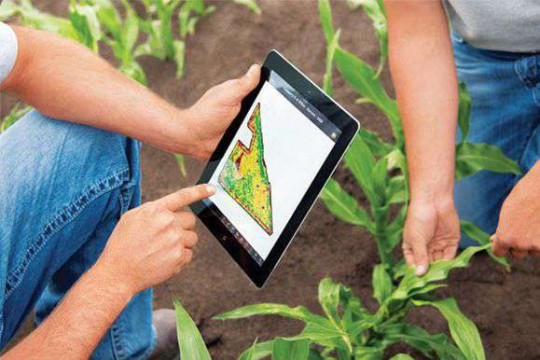
Mobile app for smallholder farmers Farmers in developing countries are actively embracing smartphones, and this gives room for mobile applications that can meet their needs. In past years, lots of applications have come for individual farmers. However, the demand is far from satisfied. Let’s see what goals an agriculture app can help a smallholder farmer fulfil There are dozens of big and small issues that a farmer's mobile app helps tackle. There are most important ways that mobile applications can be useful
1. Providing information A mobile app can give farmers valuable guidance that can help them enhance their planting, cultivating, and harvesting. This guidance may include agricultural best practices, weather forecasts, and data on disease epidemics. Such applications can also instruct new farmers and allow experienced farmers to apply new techniques.
2. Providing access to input markets Inputs include all products a farmer needs for farm work, like:
Seeds
Fertilizers
Pesticides
Fungicides
An application cum a marketplace where a farmer can find all the necessary products and compare their prices
Mobile solution for a large agriculture enterprise Large agricultural enterprises need full-fledged apps for internal management and operations. A cloud-based approach is the best choice for this, as many people should have access to data that changes dynamically. Mobile solutions for large agribusinesses should serve different goals like:
Instruction and knowledge
Chat with experts
Analysing the current harvest growth and compare it to previous
Monitoring fields, crops, and soil
Adjusting strategy to weather conditions
Planning and estimating harvest
Real time alerts
0 notes
Text
Top 5 features to look before downloading any agriculture app
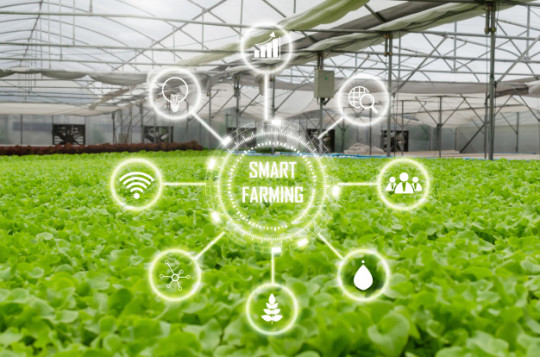
Today, there are hundreds of applications for agriculture that solve problems and help producers, distributors, farmers, and big agricultural companies gather valuable data, manage crops, observe fields from above, and create smart strategies for optimizing their processes. In this situation the user faces confusion which one to choose because there are so many mobile apps to choose from, and so little time.
Let us help you a little, before you download any agriculture application, keep these features in mind
1. Crop Calendar: To get timely reminders for smart farming & scientific agro advisory
calendar of events for your planned crop with respect to the entire set of operations on a real time basis. Agro /crop advisory enabled which will help you to get into operations. So that you can address critical crop events at the right stage to enhance the productivity and achieve the full-potential of the crop
2. Chat with Expert: To get real-time agro advisory through agri experts
So that you can ask any query with respect to crop Advisory or protection and expert Crop/Agri Advisors will answer you and support you in your way of keeping your crops healthy and happy. You can connect with crop experts through Chat, Videos or Images and they will get back to you with the remedy in terms of Soil Health, Nutrition deficiency or Disease Pest Management.
3. News and Videos: To get on time information about agriculture around the world
This kind of news and videos focused on agriculture will help you stay connected to the recent trends and innovative happenings from around the world for sustainable agriculture
4. m-Commerce: To buy crop solutions online
This type of feature helps you to buy solutions for your farming needs and provides inputs for Integrated Nutrient Management (INM) and Integrated Pest Management (IPM) approach
5. Multi-Language support: To get information in language you are comfortable with
This type of feature helps you to interact with application’s features in your preferable language as well as helps you access it easily
0 notes
Text
Smart Farming Through Smartphones
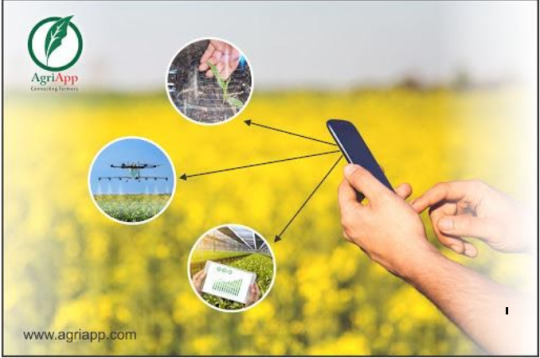
Moreover, an option to chat with experts, video-based learning, the latest news, online markets for technology today is present in every aspect of our lives, and it is widely distributed to everyone. The main expression of technology in the industry, farming, and household are communication and mobile technology. More than 5,6 billion people use mobile phones, nearly 80% of the world's population. Almost 90 to 94% of farmers use mobile phones, especially in developing countries, where mobile phones may be the only available widespread computing and communication technology. This figure leads us to the conclusion that we have the ability to use mobile technology to help farmers improve their agricultural production.
In the sector of farming, the advancement in technology brought many improvements in the facilities used in farming. One of the most dramatic changes in the use of mobile devices in agriculture is the development of monitoring protocols and systems for monitoring and managing to crop health real-time alerts etc
Information and communication technology has played an important and potential role in increasing the reach of agricultural extension. in the terms of India where farmers explore the use of a voice message forum to provide interactively and access to suitable and timely agricultural knowledge and information from experts by use of mobile phone applications.
Now mobile phones are being adopted by rural communities in India to get information about disasters as well as pesticides, for this kind of services. One of the best examples is AgriApp. It helps you to get complete information on crop production, crop protection, smart farming with agriculture, and allied services. AgriApp is also an online marketplace for bringing in farmers, Agri input, retailers & fulfillment services on a common digital platform
It also allows farmers to access all the information related to “High value, low product” category crops from varieties, soil/ climate, harvesting and storage procedures fertilizers, insecticides, etc. and it is also available in 11 languages.
By using this kind of mobile phone application, in remote areas farmers and small businesses can gain rapid access to the market and get information about crop and commodity availability. Farmers can save money, time and can gain valuable guidance as well as a good profit.
0 notes